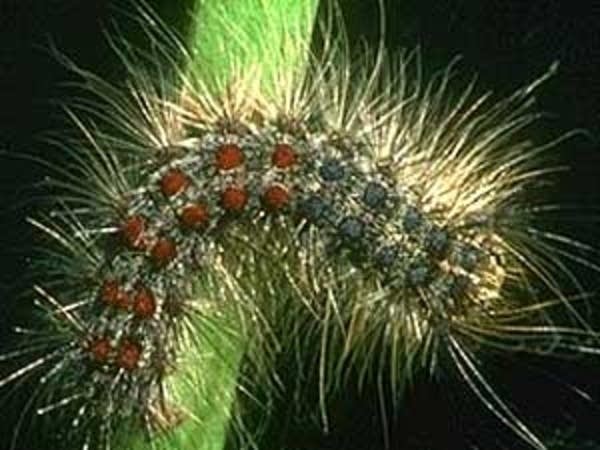Spraying begins against the gypsy moth

Airplanes begin spraying parts of Lake and Cook county this week for the highly destructive forest pest gypsy moths.
Weather permitting, the spraying will begin today over five tracts in the two northeastern counties.
The area has seen persistent infestations of gypsy moths, a forest pest that has been advancing on Minnesota for years, said Department of Agriculture Spokesman Michael Schommer.

"We're at a point now where sort of that main wave is poised to enter Minnesota, and I think the Northeast area of the state is really sort of our first battle ground," Schommer said.
Gypsy moths can arrive hidden in products like firewood, but experts think the moths may be blowing to the North Shore from Wisconsin and Michigan, where they're better established.
Moths are treated with a chemical that confuses them to disrupt mating, but is harmless to humans and other animals.
Create a More Connected Minnesota
MPR News is your trusted resource for the news you need. With your support, MPR News brings accessible, courageous journalism and authentic conversation to everyone - free of paywalls and barriers. Your gift makes a difference.


